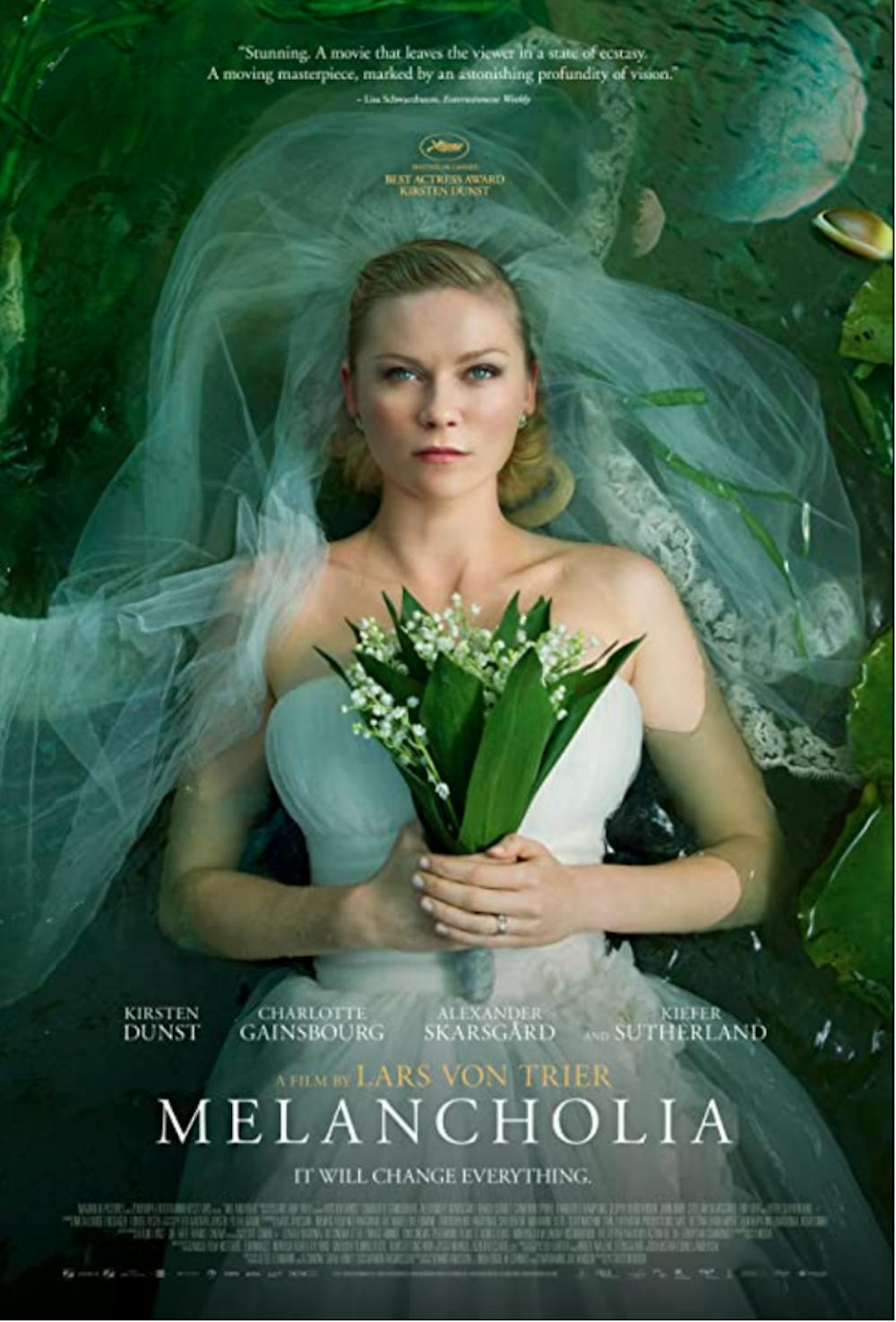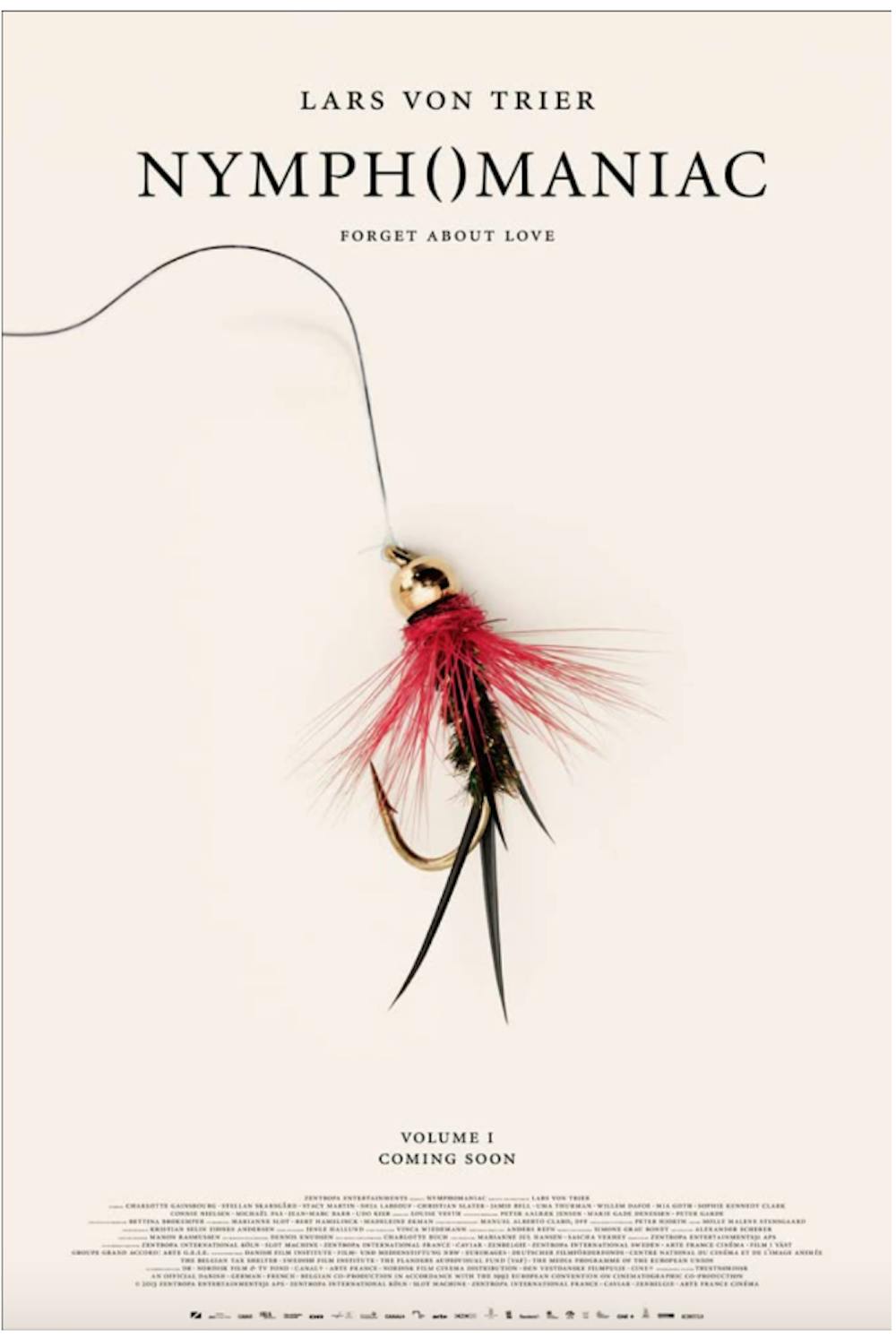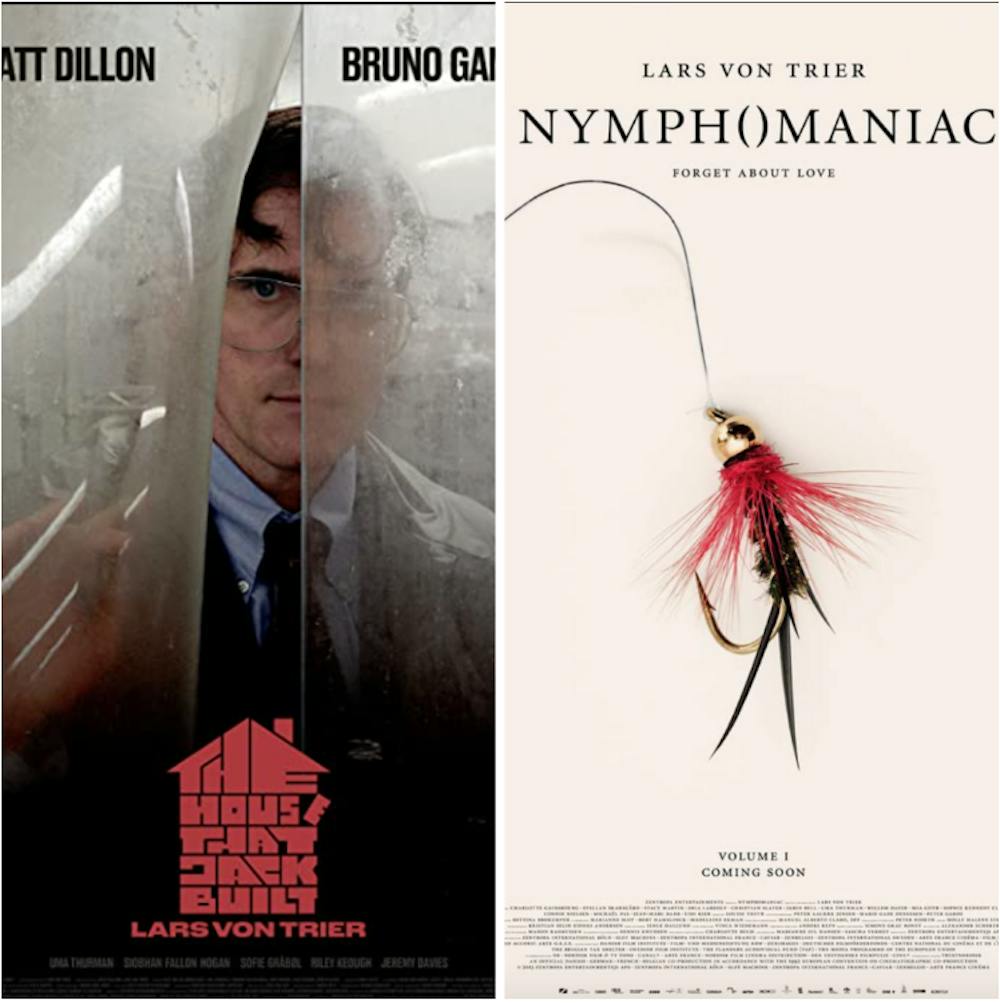By Maia Venuti
Film Critic
Lars von Trier is a Danish film director and screenwriter whose career has spanned across over four decades. His most notable work includes “Dogville” (2003), “Antichrist” (2008), “Melancholia” (2011), and “Nymphomaniac” (2013) to name only a few. No stranger to controversy, von Trier has pushed the boundaries of screen to new levels, never failing to shock the film community as a whole.
DEPRESSION
Much like his films, von Trier has divided his career into multiple parts, with each one reflecting a different time in his life. The most coveted and controversial part of his career would be from 2009 to 2014, when he released his “Depression Trilogy.” The films included in this trilogy are “Antichrist” (2008), “Melancholia” (2011) and “Nymphomaniac” (2013), all starring Charlotte Gainsbourg. This review will focus on this trilogy in particular.
The three films in the “Depression Trilogy” tell entirely different stories. Von Trier’s intention in making the “Depression Trilogy” was to create three very separate stories with starkly different characters to show depression’s many forms, as well as being a symbol for von Trier’s own depression. There are small details that are in all three films that connect the three together, but the most apparent connection, and the general theme of this trilogy, is that life on Earth is evil. In each of these films, one of the main characters makes that observation about human life, and that is the overarching theme of all three of these films.

GRIEF
The first film in the “Depression Trilogy” is “Antichrist,” which came out in 2009 and stars Charlotte Gainsbourg and Willem Dafoe, who are known only as He and She and suffer from the loss of their toddler son. The plot revolves around the couple retreating to their cabin in the forest, Eden, in an attempt to heal as the woman slowly spirals into her grief. The film is divided into six parts: a prologue, four main parts and an epilogue.
This piece of the “Depression Trilogy” revolves around grief and loss. The loss of a child is an incomprehensible kind of depression; it’s almost primal, and those aspects of loss are shown in this film. The story is deeply rooted in nature and showcases death in all of its forms. Seeing the scenes of dead animals or animals in their last moments of life was beyond unpleasant, but the message von Trier wanted to send is clear. There is a deep connection between humans and nature, with the film showing how even if animals are not on the same cognitive level as people, the feeling of sadness and grief is something animals understand. This kind of depression and sadness is incomprehensible to a person who has not experienced loss, but at the same time, it is a universal feeling to all walks of life who have gone through what the main characters are going through.
“Antichrist” is an extremely difficult film to watch, and not because of how loss is portrayed. The story shows the slow and subtle descent into what can only be described as the madness of a grieving mother, while her husband, a therapist, tries to help her heal. But as the film went on, she began to devolve into insanity. Without a doubt, the most disturbing part of thie film comes during this mental break, in which a bizarre, horrific and unwavering fascination with sadomasochism, but more specifically gynocide, comes to light. Her fascination with gynocide morphed into believing that women are evil, and that all life on Earth is evil. This all culminates in the female main character committing gynocide upon herself. By this point, I did not even understand how we got here. I forgot that it started out as the story of a grieving couple being unable to heal from the loss of their son. This scene was unnecessary, sickening, and quite frankly, made me physically ill.
“Antichrist” is an absolutely macabre, vomit inducing nightmare that forgot what it was originally about.

DESPAIR
The second film in von Trier’s “Depression Trilogy” is “Melancholia” (2011), which stars Kirsten Dunst, Charlotte Gainsbourg, Stellan and Alexander Skarsgard, and Kiefer Sutherland. This film tells the story of a young depressed woman celebrating her wedding, as a massive planet by the name of Melancholia is slowly making its way towards Earth.
Von Trier based the depression seen in the main character, Justine (Kirsten Dunst), off of a depressive episode that he had gone through, with this film showing the kind of depression that a person is born with. The first eight minutes of the film are the most beautiful, cinematic slow motion shots chronicling the events of the film, showing symbolic moments that later become understood, as well as showing how the film ends, with Melancholia hitting Earth.
“Melancholia” is only divided into two parts with the first part, called “Justine,” taking place on Justine’s wedding night, showing her wedding reception, her relationship with her new husband Michael, as well as the severe depression she suffers from. The second part is called “Claire” and focuses on Justine’s sister, Claire (Charlotte Gainsbourg), and her anxieties about the fast approaching planet.
Since its release eleven years ago this May, “Melancholia” has become one of von Trier’s most popular and adored films, with some going as far as to argue that it might be one of if not the greatest film about depression of all time. The film received an overabundance of praise, all of which was greatly warranted.
What makes “Melancholia” different from the other films in the “Depression Trilogy” is its relatability. The depression that is felt by Justine throughout the film is not one that is acquired from experiences in life; it is not one that can be caused by trauma, it is a kind of depression, a kind of pain that one is born with, a chemical imbalance. As someone who has lived with this kind of depression my whole life, seeing it on screen in an accurate portrayal for the first time was eye opening. The depression that Justine feels is a kind of depression someone has lived with for a long time. What I loved most about this portrayal was what Justine’s life looks like: she has a high paying job at a great company, a loving sister, a gorgeous husband, and she is celebrating her wedding. Despite this, she is still in so much pain and feels completely submerged in her depression.
Without a doubt, “Melancholia” is the best film in this trilogy, and the only one worth watching. The film made me realize that I am not alone in my feelings, by showing a very specific kind of depression.

ADDICTION
The final film in von Trier’s “Depression Trilogy” is by far the longest one. “Nymphomaniac” (2013) has the largest and most star studded cast, starring Charlotte Gainsbourg, Stellan Skarsgard, Willem Dafoe, Uma Thurman, Christian Slater and Shia Laboeuf, among others. The film itself is divided into two volumes, and the runtime for watching both films takes approximately five hours. There are eight parts in total; each part is a story told as a flashback from the perspective of the main character Joe (Stacy Martin/Charlotte Gainsbourg). Joe is a self proclaimed nymphomaniac, who is telling her story to Seligman (Stellan Skarsgard) after he found her unconscious and beaten up in an alleyway.
“Nymphomaniac” is one of the most controversial films to come out in the past decade, as it shows some of the most intense, uncensored sex scenes that have ever been filmed. Absolutely nothing is left to the imagination, and in total the amount of sex scenes that took place throughout the entire run time of that film probably take up about a quarter of its runtime. The film is considered by many to be high budget porn, and I personally see it as a-list celebrity porn directed by one of the most famous film directors to come out of the 20th and 21st century. Upon its release, the film received praise from critics, earning a 76% on Rotten Tomatoes.
“Nymphomaniac” focuses on a kind of depression that I interpreted as stemming from addiction. Joe considers herself to be a nymphomaniac, a woman addicted to sex who is unable to control her addiction. As the story progresses, the sex scenes go from raunchy and shocking to becoming more serious and dark in nature as Joe’s sexual desires intensify and she begins to need more and more to satisfy her.
When looking at the film after watching it, I loved the story of it and thought it was extremely well told and well written. However, the sheer amount of sex scenes was extremely exhausting to deal with for the first few hours of my viewing experience. Stellan Skarsgard once said, "... if you look at this film, it's actually a really bad porn movie, even if you fast forward. And after a while you find you don't even react to the explicit scenes. They become as natural as seeing someone eating a bowl of cereal." This is probably the best way to describe the film, as by the end of it you don’t even see the sex scenes; it just feels like a regular scene.
CONCLUSION
Overall, Lars von Trier’s portfolio is fine at best. Out of all of his films I have seen, the only one I actually enjoyed was “Melancholia.” Every other movie of his that I have seen has made me regret watching it and made me yearn for a time before watching. If you want to explore von Trier, I would just recommend you stick to “Melancholia” and save yourself the mental upset, physical sickness and emotional damage that watching his movies has caused me.







